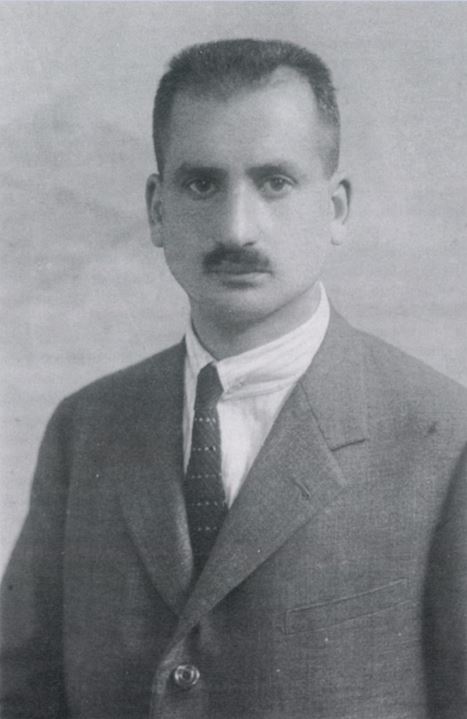Biography of Ernesto Weiss
Ernesto Weiss was born in Trieste in 1888, the first of nine children of Ignazio, an entrepreneur from Bohemia who had moved to Trieste - like many other Jews of the Empire - in 1882, to start an oil trading business, and Fortuna Jacchia, of Sephardic origin.
After attending the German state secondary school, he began a course of studies that would take him to Vienna, Berlin, Pisa and Graz. In this last city, he qualified to teach mathematics, physics and chemistry in Italian and German, and until 1918, he worked as assistant at the local University Hygiene Institute. His daughter Laura was born in Graz in 1914; here, Ernesto worked for the Austrian Red Cross during the First World War. Another daughter, Nora, died young from the Spanish flu.
In 1904, Ernesto had joined the Socialist Party and he would maintain a cosmopolitan, internationalist position throughout his life, paying close attention to the conditions of ethnic and religious minorities.
Back in Trieste after the war, he taught natural sciences in the secondary schools, until the law was promulgated against “unreliable” public officials, which in Italy, in 1925, put an end to his work and that of a great many other teachers, forcing him to “go back to” his father’s oil factory, where he worked as Chemical Manager until 1938, yet without ever abandoning his botanical studies.
The fascist period led to a breakup of the Weiss family, which following the issue of the racial laws, held closely onto its Jewish roots, despite being partly forced to move away from its city of origin: his brother Edoardo, a famous psychoanalyst, moved to the United States of America, where he lived until his death; Ottocaro was, in turn, forced to flee with his wife.
In 1940, Ernesto was no longer even able to work at the oil factory and he became a science teacher at the private Israeli middle school of Trieste, established in a bid to educate the Jewish students who had been expelled from schools in 1938 and provide work for teachers who had lost their jobs. Ernest resumed state school teaching in 1946, after a twenty-year gap.
During the Nazi occupation, the Weiss family hid on the Karst plateau and thereafter in Veneto. After the war, Ernesto and his daughter Laura, united by a political passion, became unionists and activists the Italian Communist Party (PCI). In 1956, Ernesto was elected to the provincial administration and was active not only in a cultural and political field but also with trade unions, promoting a renewal of the school system through dedicated associations.
Weiss the botanist, specialised in bryology, gathered together a truly one-of-a-kind collection of mosses and lichens, which he later donated to the Trieste Natural Science Museum. His scientific passion did not abate, not following his exclusion from the Adriatic Natural Sciences Society in 1938 nor the Society's refusal to have him return to the Association in 1946.
He died in Trieste in 1967, at the end of a professional and human itinerary that although not always linear in terms of social commitment, due to the various crises that caused him to distance himself from public life for long periods of time, was, however, professional, consistent and certainly worthy of note.
Biographical sources
Andri A. [et al.], Le carte dei Weiss: una famiglia tra ebraismo e impegno politico, Trieste, Istituto Livio Saranz – La Mongolfiera, 2007
Istituto Livio Saranz, Fondo Weiss: scheda ISAD (G)

